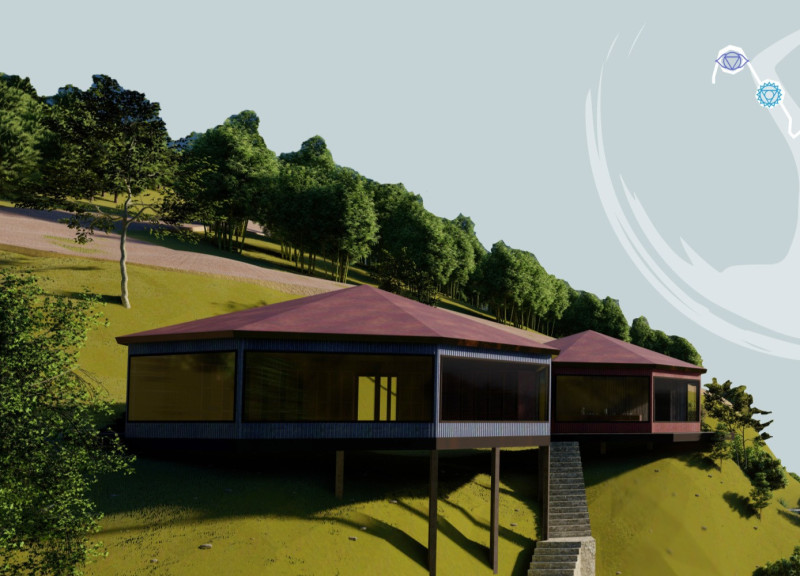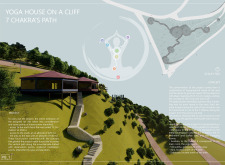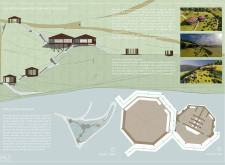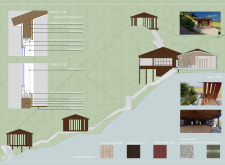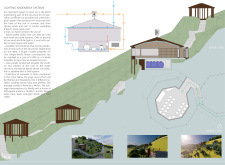5 key facts about this project
The Yoga House on a Cliff is set within a mountainous landscape, designed to function as a spacious area for yoga and meditation. Its layout follows a vertical path that symbolizes the journey through the seven chakras, encouraging users to engage with both their inner selves and the surrounding environment. The building serves as a place for reflection and personal growth while maintaining a strong connection to nature.
Conceptual Framework
The design is based on the principles of the seven chakra system, where each space within the building corresponds to a specific chakra. The overall plan resembles the posture of a figure kneeling, which conveys openness and a readiness to connect with the environment. This approach invites users to explore their surroundings and fosters a collective sense of community and harmony.
Functional Arrangement
The building is divided into two main areas. The eastern section contains a café and changing rooms, while the western area is dedicated to the yoga studio, accommodating up to 30 participants. This separation of functions promotes easy access and encourages interactions among users. Pathways interlink both areas, ensuring smooth movement throughout the site and enhancing the overall experience.
Materiality and Sustainability
Although emphasis is placed on user experiences, the choice of materials plays an important role in integrating the building with its surroundings. The structure uses concrete with local recycled stones, laminated parquet, chestnut wood, a sheet metal roof, and a steel frame. These materials were selected with sustainability in mind. Additionally, renewable energy systems such as a hybrid pellet boiler, wind turbines, solar panels, and a rainwater collection system were incorporated into the design, emphasizing environmental responsibility.
Design Details
Large windows are featured prominently on the southern side of the building. They allow natural light to fill the spaces while offering views of the picturesque landscape. This design not only enhances the interior atmosphere but also reinforces the connection between the users and the natural world. The thoughtful balance between spacious areas and intimate settings creates an environment conducive to meditation and self-exploration.


